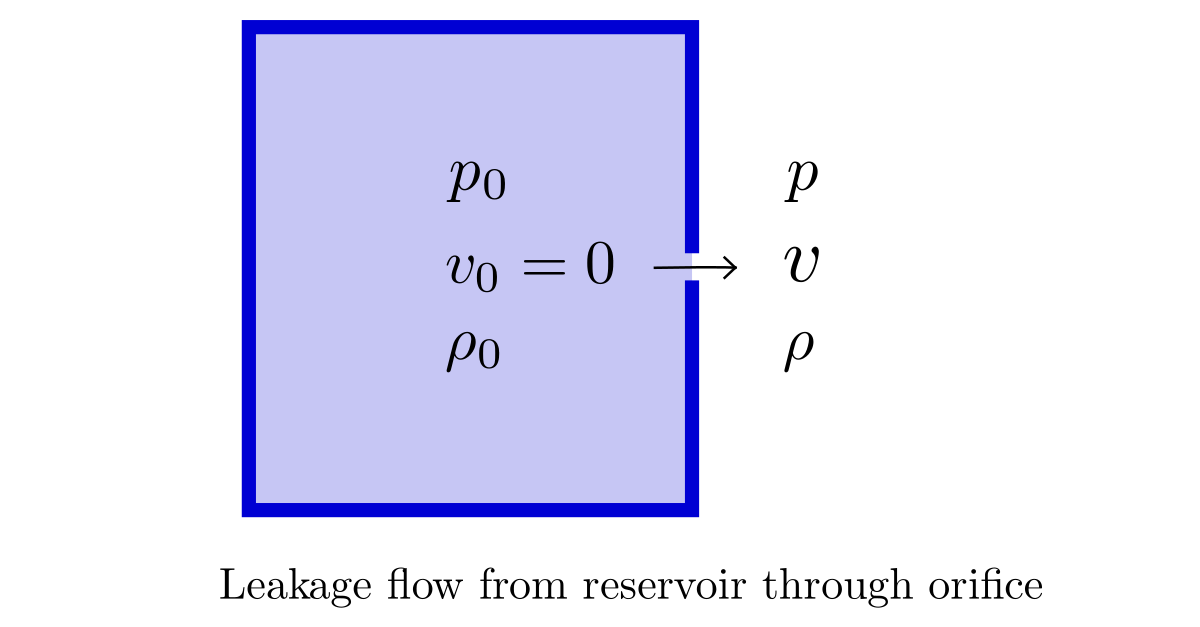Orifice Leakage Calculation¶
Saint Venant Formula¶
The velocity of fluid escaping from the reservoir through orifice is given by the following equation.
where
\(v\) is the flow velocity through orifice
\(\gamma\) is the ratio of specific heats \(C_p/C_v\)
\(p_0\) is the pressure in reservoir`
\(\rho_0\) is the density in reservoir`
\(r=p_0/p\) is the pressure ratio across orifice`
The density inside the reservoir \(\rho_0\) can be obtained using the ideal gas law
where
\(R_g\) is the specific gas constant
\(T_0\) is the temperature in the reservoir in K`
The specific gas constant is obtained as
where
\(R_u\) is the universal gas constant (=8314 J/kmol.K)
\(MW\) is the molecular mass of the fluid in kg/kmol or gm/mol`
The mass flow rate of the fluid escaping through the orifice can be obtained as follows:
where
\(\dot{m}\) is the leakage mass flow rate
\(A\) is the area of the orifice`
\(\rho\) is the density of fluid as it just escapes the orifice`
Using isentropic process relationships we have
Substituting the value of \(v\) and \(\rho\) in (1) we get
In actual practice, the flow will be less than what is derived above and this is addressed by introducing the coefficient of discharge term \(C_d\). Introducing that in the above equation we get the final form of the equation which is also popular by the name Saint Venant Equation.
Important
Saint Venant Equation
